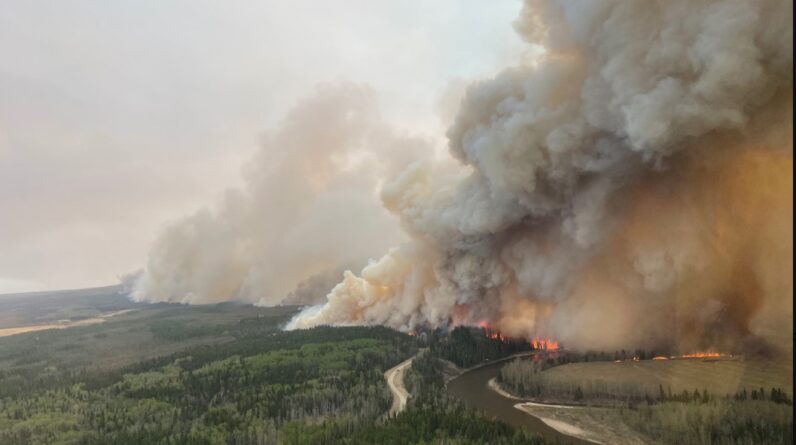
[ad_1]
Recent wildfires have caused smoky conditions throughout the province.
Source – Alberta Wildfire (Alberta Government)
As more than 80 wildfires continue to burn in Alberta, smoke from the blazes now blankets most of Canada.
As of Thursday, according to NOAA, there were 82 wildfires actively burning in Alberta, with 23 listed as being out of control. So far this year, the province has seen 426 wildfires. There have been 179 fires in neighboring British Columbia so far this year. Of those, 46 are actively burning, 8 of which are out of control.
Roughly a million acres have burned, and more than 29,000 people in Alberta and British Columbia were forced to evacuate their homes. An estimated 18,000 people remain forced from their homes.
A real-time tracking map created by the Environmental Protection Agency’s AirNow, which monitors wildfires and air quality in North America, shows the trajectory of the smoke plume reaching as far north as Great Bear Lake in the Northwest Territories as of Thursday morning, reports CTV News Canada.
 Air quality as of May 12, 20o23 at 10:45 ET.
Air quality as of May 12, 20o23 at 10:45 ET.
Air quality statements remain in effect for much of Alberta with Environment and Climate Change Canada also warning of poor visibility due to wildfire smoke.
“People with lung disease (such as asthma) or heart disease, older adults, children, pregnant people, and people who work outdoors are at higher risk of experiencing health effects caused by wildfire smoke,” the national weather agency said in a statement.
The long and windy path of the smoke from Canada
By Wednesday evening, the smoke from the wildfires in western Alberta had winded its way to portions of the Great Lakes, Northeast, and Mid-Atlantic areas.
Besides the smoke, the fires were so intense that satellite imagery captured the formation of a pyrocumulonimbus (PyroCb) cloud southeast of Edson, Alberta on May 4. This is a type of thundercloud created by intense heat and smoke.
 Pyrocumulonimbus Cloud in Alberta on May 4, 2023. Source – GOES-18 True Color RGB images from the CSPP GeoSphere site.
Pyrocumulonimbus Cloud in Alberta on May 4, 2023. Source – GOES-18 True Color RGB images from the CSPP GeoSphere site.
While the particulate matter in wildfire smoke, as well as the chemicals found in the mix, can be deadly to people with breathing problems, smoke also plays tricks on our eyes.
Smoke tends to filter out certain colors of sunlight, often making the rising and setting sun appear more red or orange. Photographers have been posting colorful sunrise and sunset photos on social media since Wednesday morning, the Washington Post is reporting.

[ad_2]
Source link






